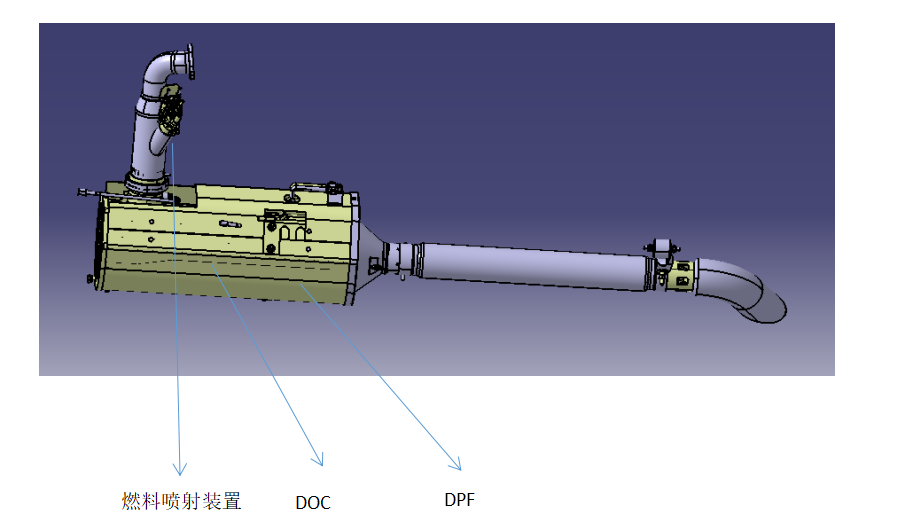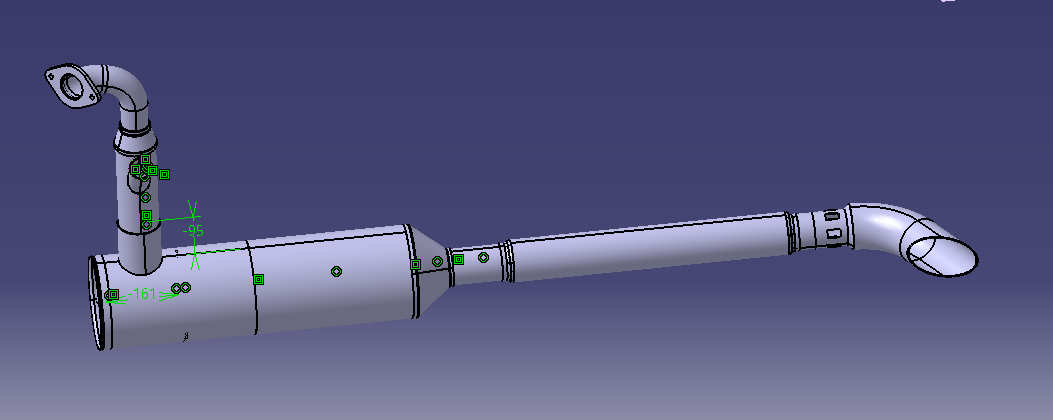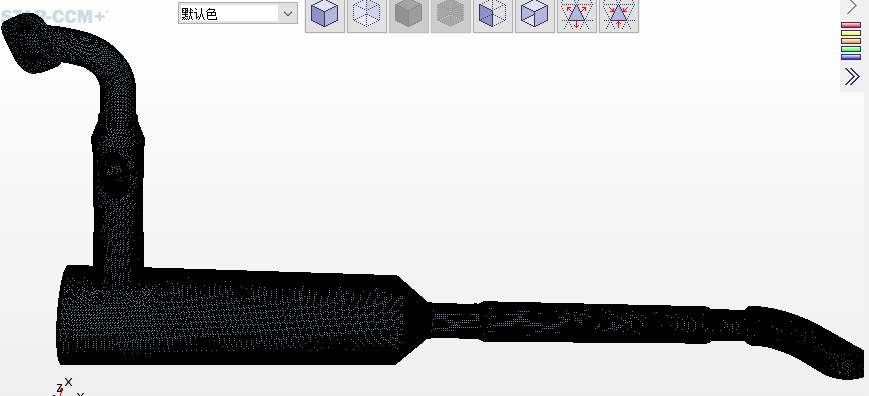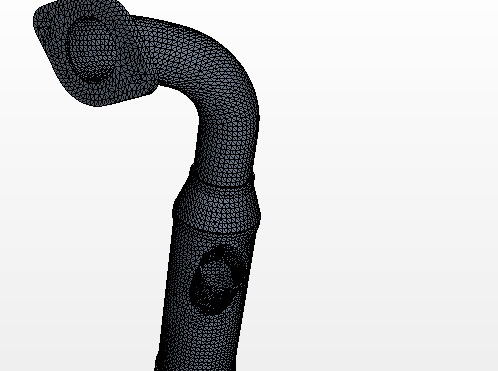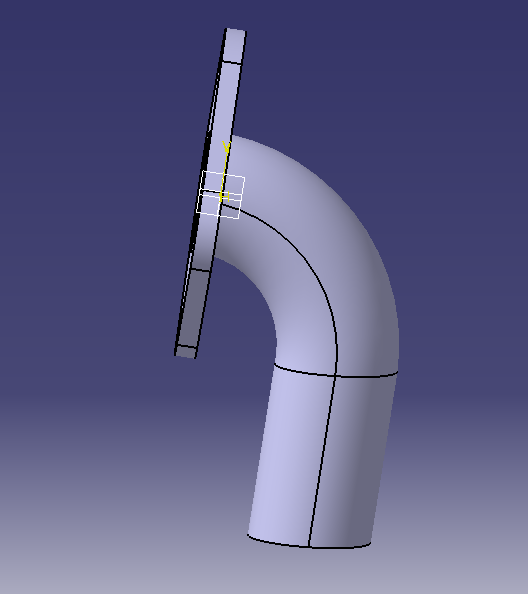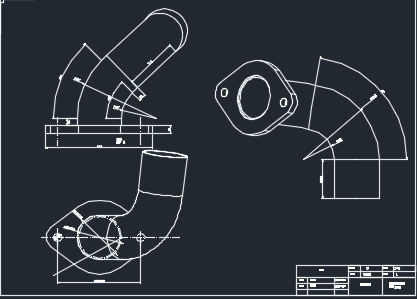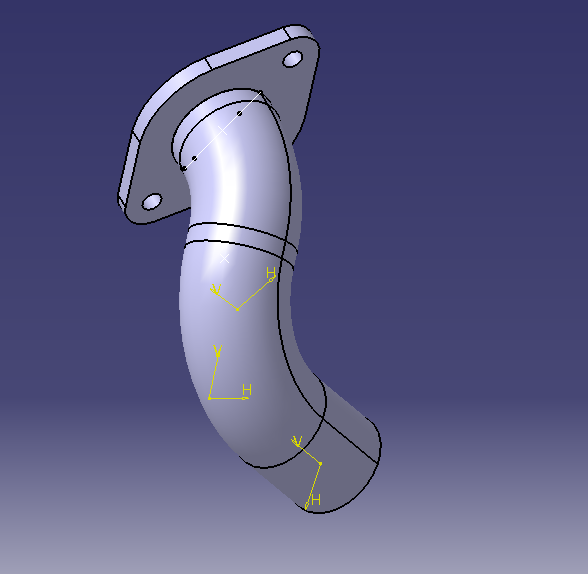非道路用柴油机排气后处理装置优化设计毕业论文
2020-04-12 15:47:49
摘 要
根据《中国机动车管理年报(2017)》显示,我国每年新增非道路用柴油机数量在200万台左右,根据数据显示,2015年非道路用内燃机的排放量,二氧化硫达到84.4万吨,碳氢达70.4万吨,氮氧化物达563.9万吨,颗粒物排放达47.2万吨。其中氮氧化物及颗粒物排放量接近于机动车的排放,对环境造成巨大危害,因此对非道路用柴油机排气后处理装置的研究有助于保护环境改善空气质量。
本文以某型号柴油机后处理装置为研究对象,使用Catia软件对其进行了三维建模,建模完成后,将三维模型导入hypermesh中进行网格划分;使用GT-power软件建立仿真的柴油机排气参数,最后将网格图导入star ccm 软件中对装置进行流场分析,检测其内部的压降分布、温度分布等流场。最后,对原有的非道路用柴油机排气装置进行优化处理,通过对排气装置的结构进行分析,提出可行的结构改进以优化排气装置的温度及压降的流场 。
最后,对优化过后的结构进行流场分析,与之前优化前的流场分析结果进行对比,证明优化的有效性。
关键词:非道路用柴油机;柴油机颗粒捕集器;排气优化;流场分析
Abstract
According to China's annual report on motor vehicle management (2017), the number of new non road diesel engines is added to about 2 million units per year in China. According to the data, the emissions of non road internal combustion engines in 2015 have reached 844 thousand tons, 704 thousand tons of hydrocarbons, 5 million 639 thousand tons of nitrogen oxides and 472 thousand tons of particulate matter discharge. . The emission of nitrogen oxides and particles is close to the emission of motor vehicles, causing great harm to the environment. Therefore, the research on the exhaust aftertreatment device for non road diesel engine will help to protect the environment to improve the air quality.
In this paper, a diesel engine post processing device is used as the research object, the 3D modeling is carried out by Catia software. After the modeling is completed, the 3D model is introduced into the HyperMesh for grid division, and the simulation diesel engine exhaust parameters are established by using GT-power software. Finally, the grid map is introduced into the star ccm software for the flow of the device. Field analysis is used to detect the pressure drop distribution and temperature distribution inside the flow field. Finally, the original exhaust device of the non road diesel engine is optimized. Through the analysis of the structure of the exhaust device, a feasible structural improvement is put forward to optimize the flow field of the temperature and pressure drop of the exhaust device.
Finally, the flow field analysis of the optimized structure is compared with the flow field analysis before optimization, which proves the effectiveness of the optimization.
Key words: non road diesel engine; diesel particulate trap; exhaust optimization; flow field analysis
目录
摘要 I
Abstract II
第1章 绪论 1
1.1 研究背景及意义 1
1.2 国内非道路用柴油机排放标准 1
1.3 国内外研究现状 3
1.4 本文研究内容 4
第2章 主要的排气后处理的技术研究 5
2.1 柴油机后排气优化的主要技术 5
2.2排气后处理主要的技术路线 7
2.3本章小结 8
第3章 柴油机排期后处理装置的建模分析 9
3.1柴油机排气装置的流场分析原理 9
3.2流场分析的数值模拟 10
3.2 三维建模与网格划分 12
3.3温度场分布与分析 14
3.3流动性分析与改进方案 15
3.4 改进后的流场分析 22
3.5本章小结 25
第4章 展望与总结 26
4.1总结 26
4.2 展望 26
致 谢 28
参考文献 29
第1章 绪论
1.1 研究背景及意义
我国作为一个科技快速进步的发展中国家,国民生产总值的增长与科技进步紧密相连。我国是传统的农业大国,另外,我国的工业发展也十分迅速,一些劳动密集型产业的产品大量出口,成为国民经济重要来源之一[1],伴随着对农业生产和工业制造等多方面的需要,非道路用柴油机的使用量也在逐年上升[2]。从我国目前的柴油机使用量分析,非道路用柴油机保有量占柴油机总量的半数以上,而非道路用柴油机的排放量占20%以上,近年来非道路用柴油机数量保持每年增量200万台左右。根据《中国机动车管理年报(2017)》,2015年非道路用内燃机二氧化硫排放84.4万吨,HC 70.4万吨,氮氧化物563.9万吨,PM 47.2万吨,其中,工程机械碳氢排放达30.2万吨,氮氧化物排放达206.2万吨,颗粒物达13.5万吨。农业机械排放与工程机械排放相当,船舶的排放相对较低。船舶的硫化物、碳氢化合物、氮氧化物、颗粒物数值为78.8万吨、2.8万吨、121.4万吨、11.9万吨。
非道路用柴油机主要的排放污染物主要是氮氧化物、颗粒物和碳氢化合物[4]。柴油机的过量空气系数大、压缩比高、燃油混合不充分、工作粗暴,导致氮氧化物大量生成,排放到空气中生成二氧化氮,影响空气质量并造成光化学污染。氮氧化物反应生成的臭氧对植被造成负面影响,而颗粒物和碳氢同样是大气污染物,成为影响空气质量,伤害人体健康的负面因素。
1.2 国内非道路用柴油机排放标准
基于我国控制内燃机排放技术落后的国情,我国柴油机排放体系的建立晚于国外标准建立的时间,主要的框架是参考欧洲的排放标准体系,在此基础上融入我国特有的国情而建立的道路用及非道路用内燃机的排放标准。下表1-1及1-2分别为我国第二及三、四阶段非道路用柴油机的排放标准。
表1-1 第二阶段非道路用柴油机排放限值
额定净功率 (Pmax) (kW) | CO (g/kWh) | HC (g/kWh) | NOx (g/kWh) | HC NOx (g/kWh) | PM (g/kWh) |
130≤Pmax≤560 | 3.5 | 1.0 | 6.0 | — | 0.2 |
75≤Pmaxlt;130 | 5.0 | 1.0 | 6.0 | — | 0.3 |
37≤Pmaxlt;75 | 5.0 | 1.3 | 7.0 | — | 0.4 |
18≤Pmaxlt;37 | 5.5 | 1.5 | 8.0 | — | 0.8 |
8≤Pmaxlt;18 | 6.6 | — | — | 9.5 | 0.8 |
0lt;Pmaxlt;8 | 8.0 | — | — | 10.5 | 1.0 |
表1-2 第三、四阶段非道路用柴油机排放限值[4]
阶段 | 额定净功率 (Pmax) 以上是毕业论文大纲或资料介绍,该课题完整毕业论文、开题报告、任务书、程序设计、图纸设计等资料请添加微信获取,微信号:bysjorg。 相关图片展示:
您需要先支付 50元 才能查看全部内容!立即支付
最新文档

|

